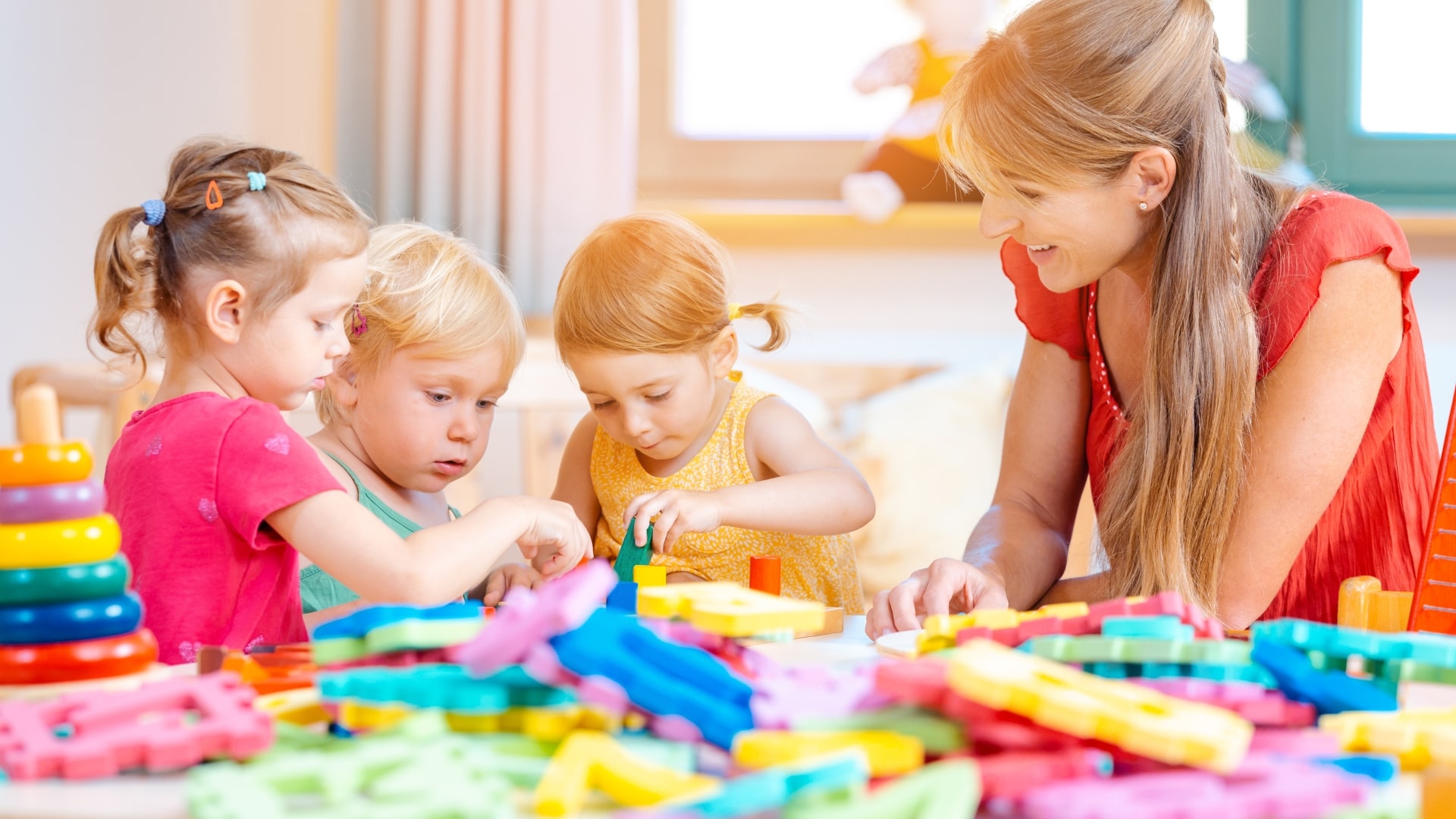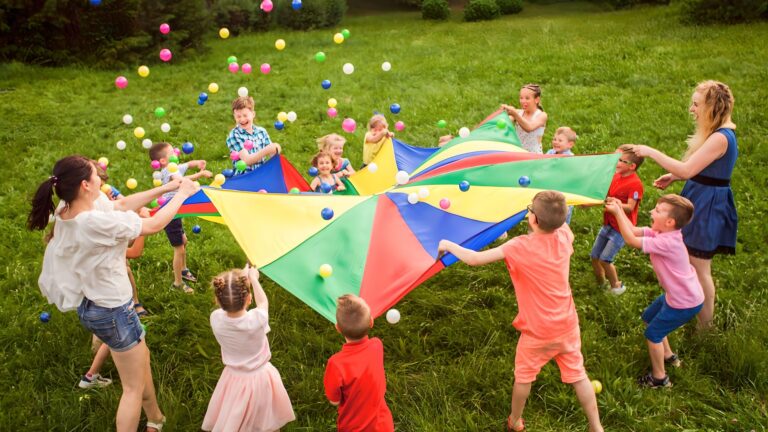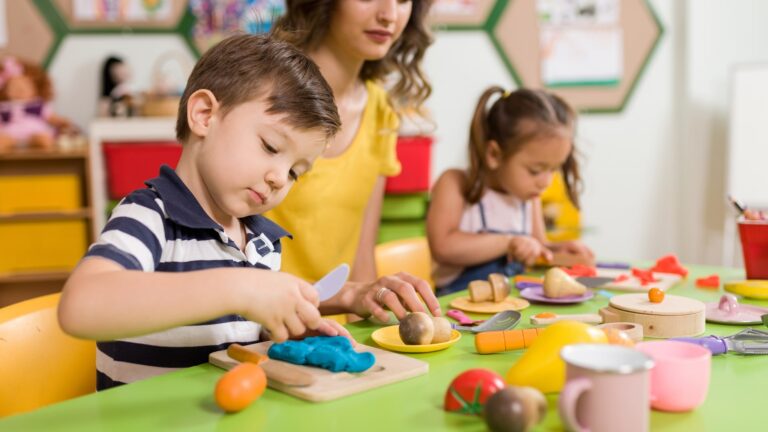6 Effective Strategies to Promote Problem-Solving Skills in Young Children
Problem-solving is a critical skill that helps children navigate the challenges they face throughout their lives. As early childhood educators, we can encourage and promote problem-solving skills in young children from the earliest stages of development. Here are some strategies for promoting problem-solving skills in young children:
1. Encourage exploration and experimentation
Young children are naturally curious and love to explore their surroundings. Encourage this natural curiosity by providing opportunities for your child to experiment with different materials and objects. This can help them develop their problem-solving skills by encouraging them to explore and discover new solutions to challenges. Here are some examples of how to encourage exploration and experimentation in young children:
- Sensory Play
Sensory play involves providing children with materials that stimulate their senses, such as touch, sight, smell, and sound. Examples of sensory play materials include water, sand, play dough, and different textures of fabrics. Sensory play allows children to explore their environment and develop their creativity and problem-solving skills by manipulating materials to create different outcomes. - Block Play
Blocks are an excellent tool for promoting exploration and experimentation in young children. Children can build structures and experiment with different block combinations to create different outcomes. Block play encourages children to develop their spatial awareness, hand-eye coordination, and problem-solving skills. - Outdoor Play
Outdoor play provides young children with endless opportunities for exploration and experimentation. Nature provides an endless variety of materials for children to explore, such as rocks, sticks, and leaves. Children can create their own outdoor play spaces and experiment with building structures or creating games. - Art and Craft Activities
Art and craft activities are a fantastic way to encourage exploration and experimentation in young children. Children can experiment with different materials such as paint, glue, and paper to create different outcomes. Encouraging children to experiment with different materials and techniques can help them develop their problem-solving skills and creativity. - Science Experiments
Simple science experiments are a great way to encourage exploration and experimentation in young children. Children can observe cause and effect relationships by experimenting with different materials or processes. For example, children can experiment with different ingredients to make slime, or create a volcano eruption with baking soda and vinegar.

2. Promote imaginative play
Imaginative play can be a valuable tool for promoting problem-solving skills. By engaging in pretend play, children can develop their creativity, critical thinking, and problem-solving abilities. Encourage your child to engage in imaginative play by providing them with props and toys that stimulate their imagination. Here are some examples of how to promote imaginative play in young children:
- Pretend Play
Pretend play involves children creating imaginary scenarios and acting them out using props and toys. Children can engage in pretend play with dolls, toy cars, play kitchen, and other props that stimulate their imagination. Pretend play allows children to explore different roles, experiment with different scenarios, and develop their problem-solving skills by working through imaginary conflicts and scenarios. - Dress-Up
Dress-up allows children to experiment with different identities and roles. Children can dress up in different costumes and props and create imaginary scenarios. Dress-up encourages children to use their creativity, develop their empathy and social skills, and engage in problem-solving by working through imaginary conflicts. - Storytelling
Storytelling is an excellent way to promote imaginative play and encourage problem-solving skills. Children can create their own stories, or teachers can read them stories and encourage them to retell or create their own versions. Storytelling encourages children to use their creativity, develop their language skills, and engage in problem-solving by imagining different outcomes. - Creative Play Spaces
Creating a dedicated play space can promote imaginative play and problem-solving skills in young children. A play space can be designed to encourage imaginative play, such as a play kitchen, a dress-up area, or a building area. Providing children with the necessary props and materials to stimulate their imagination can help them develop their problem-solving skills by encouraging them to create different scenarios. - Open-Ended Toys
Open-ended toys, such as blocks, art materials, and playdough, can be used in a variety of ways to promote imaginative play and problem-solving skills. Children can experiment with different combinations and create their own scenarios, developing their creativity and problem-solving abilities.
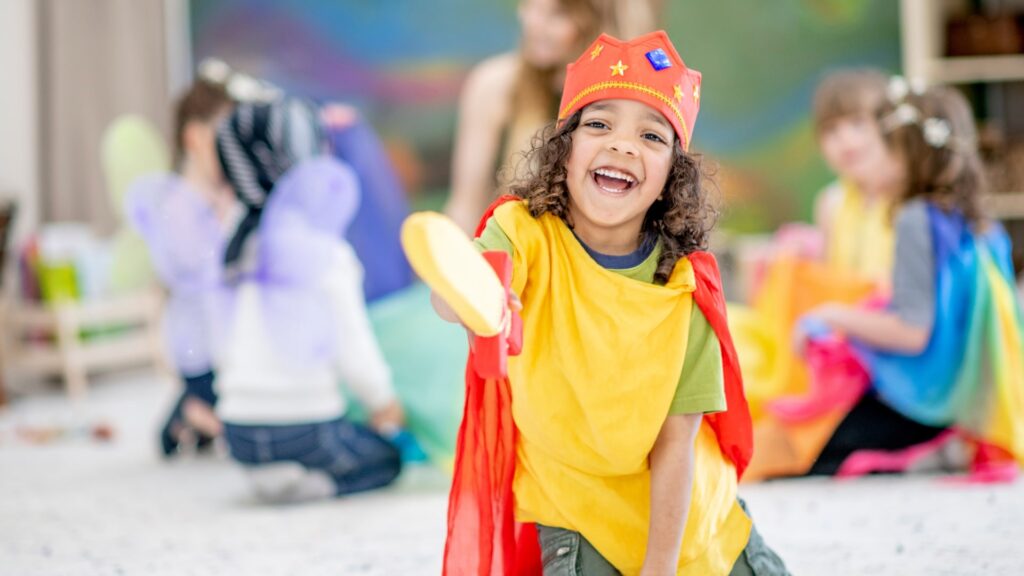
3. Teach problem-solving vocabulary
Introducing problem-solving vocabulary is an important way to promote problem-solving skills in young children. By learning problem-solving vocabulary, children can better understand and communicate about the problem-solving process. Here are some examples of problem-solving vocabulary and how to teach it to young children:
- Identify the problem
To identify a problem, children need to be able to recognize when something isn’t working as it should. Teach children words and phrases like “I’m stuck,” “This isn’t working,” or “I need help.” Encourage them to communicate when they encounter a problem and ask for help when needed. - Brainstorming
Brainstorming involves generating many different ideas to solve a problem. Teach children words and phrases like “let’s think of some ideas,” “what are some possible solutions,” or “what else could we try.” Encourage them to come up with many different ideas, even if they seem silly or unlikely to work. - Evaluate solutions
After generating ideas, children need to evaluate each solution to determine which is the best one. Teach children words and phrases like “let’s see which idea would work best,” “what are the pros and cons of each idea,” or “which solution would be most helpful.” Encourage them to consider all the possible solutions and evaluate each one carefully. - Make a plan
Once a solution has been chosen, children need to make a plan to implement it. Teach children words and phrases like “let’s make a plan,” “what steps do we need to take,” or “how can we make this happen.” Encourage them to break down the solution into smaller steps and create a plan for each step. - Reflect on the outcome
After trying out a solution, it’s important to reflect on what worked and what didn’t. Teach children words and phrases like “how did it go,” “did our plan work,” or “what could we do differently next time.” Encourage them to reflect on the outcome and use what they learned to solve similar problems in the future.
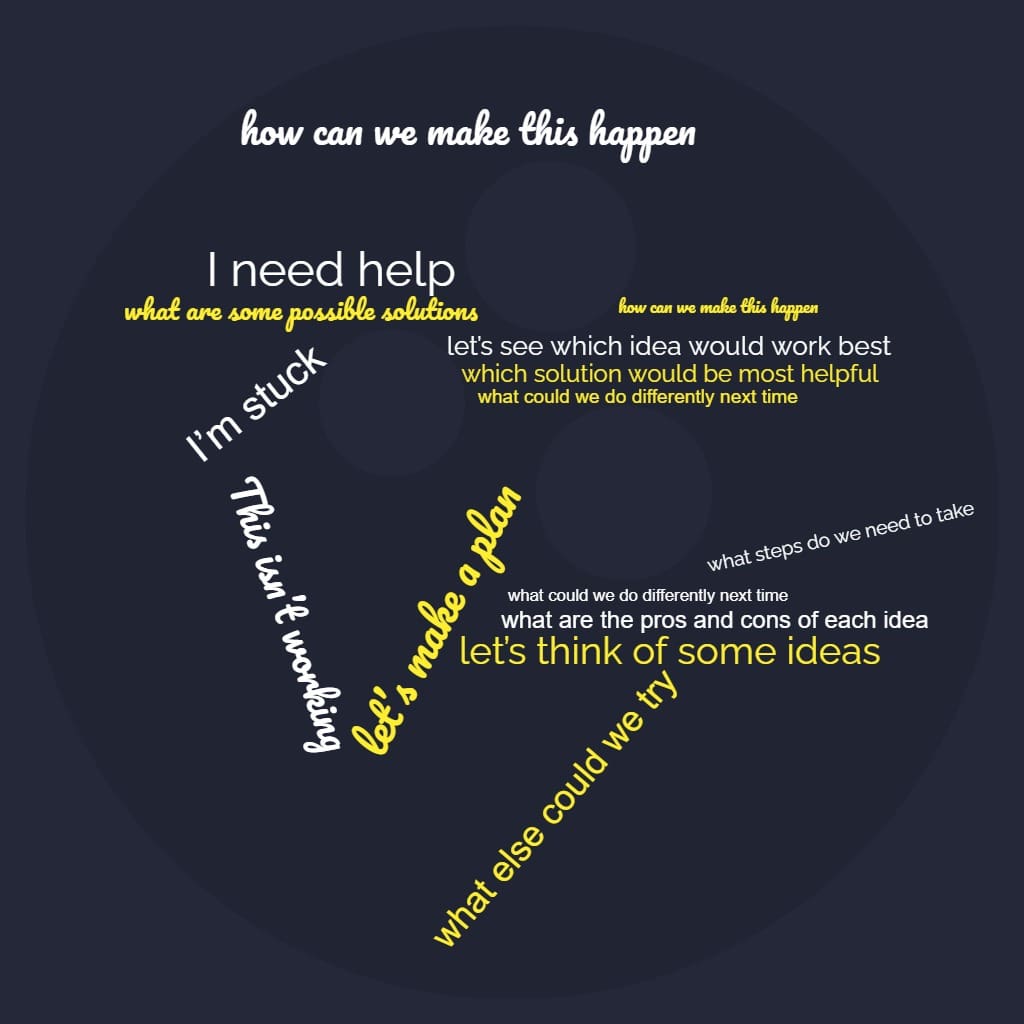
4. Model problem-solving skills
Children learn by watching and imitating the behavior of adults around them. Therefore, modeling problem-solving skills is essential for promoting these skills in young children. Let your child see you working through problems, and encourage them to ask questions and offer suggestions. When children see adults or peers effectively solve problems, they are more likely to learn and apply those skills themselves. Here are some examples of how to model problem-solving skills for young children:
- Narrate your problem-solving process
When you encounter a problem, narrate your problem-solving process out loud to show children how you think through and solve the problem. For example, “I’m trying to figure out how to fix this toy. First, I need to look at the instructions and see what’s wrong. Then, I can try a few different solutions until I find one that works.” - Use real-world scenarios
Use real-world scenarios to model problem-solving skills, such as fixing a broken toy, figuring out a puzzle, or finding a lost item. Show children how you use critical thinking and problem-solving strategies to tackle the problem, and encourage them to ask questions and offer their own solutions. - Role-play
Role-playing scenarios where children can practice problem-solving skills can be a fun and effective way to model these skills. For example, you can set up a pretend store where children can practice making decisions and solving problems related to shopping. - Provide opportunities for problem-solving
Provide children with opportunities to practice problem-solving skills in everyday activities and invite parent to do the same while cooking, cleaning, or planning a family outing. Encourage them to work through problems and come up with solutions, and praise them for their efforts. - Collaborate on problem-solving
Collaborating with children on problem-solving tasks can model effective problem-solving skills and promote teamwork. Work together to solve problems, and show children how to communicate, negotiate, and compromise to achieve a common goal.

5. Allow for independent problem-solving
While it’s essential to support young children as they develop their problem-solving skills, it’s also important to allow them to work independently. Allowing children to work through problems on their own can help them develop their critical thinking skills and build confidence in their abilities. Here are some examples of how to allow for independent problem-solving:
- Give them space
Allow children to have some time and space to work through problems on their own. Resist the urge to jump in and solve the problem for them, unless it’s a safety issue. Instead, observe from a distance and offer encouragement and support as needed. - Encourage risk-taking
Encourage children to take risks and try new things, even if they might not work out. When they encounter a problem or setback, remind them that mistakes are a natural part of the learning process and encourage them to keep trying. - Offer open-ended activities
Offer open-ended activities that allow for creativity and problem-solving, such as building with blocks, creating art, or playing with sensory materials as was mentioned earlier. These activities encourage children to use their imagination and experiment with different solutions. - Provide tools and resources
Provide children with tools and resources that they can use to solve problems independently, such as a toolbox or a collection of building materials. These resources can give children the confidence to tackle problems on their own. - Praise effort and progress
When children are working on solving a problem, praise their effort and progress, even if the solution isn’t perfect. Focus on the process of problem-solving, rather than the end result, and encourage children to keep trying and learning.

6. Encourage persistence
Encouraging persistence is critical for promoting problem-solving skills in young children. When your child encounters a problem, encourage them to keep trying and not give up. Celebrate their successes and encourage them to learn from their mistakes. When children learn to persevere through challenges and setbacks, they build resilience and develop the confidence to tackle difficult problems. Here are some examples of how to encourage persistence:
- Provide age-appropriate challenges
Provide children with challenges that are appropriate for their age and skill level. Challenges that are too difficult can be frustrating and lead to giving up, while challenges that are too easy can be boring. Finding the right level of challenge can motivate children to keep trying and push themselves. - Offer encouragement
Offer words of encouragement and support when children encounter challenges. Let them know that you believe in them and that you know they can figure it out. Encourage them to keep trying and remind them of their past successes. - Focus on progress
Focus on progress rather than perfection. Celebrate small successes and milestones along the way, even if the problem isn’t fully solved yet. This can help children see that progress is possible and encourage them to keep going. - Model persistence
Model persistence and a positive attitude in your own problem-solving efforts. When children see you persisting through challenges and setbacks, they are more likely to adopt a similar mindset. - Use positive self-talk
Encourage children to use positive self-talk when they encounter challenges. Teach them to say things like, “I can do this,” “I just need to keep trying,” and “I’ll figure it out eventually.”

In conclusion, promoting problem-solving skills in young children is critical for their overall development. By providing opportunities for exploration and experimentation, promoting imaginative play, teaching problem-solving vocabulary, modeling problem-solving skills, allowing for independent problem-solving, and encouraging persistence, we can help our children develop these essential skills that will serve them throughout their lives.

Elevate your teaching skills and stay ahead of the curve! Receive our monthly Insights, packed with professional development opportunities, classroom inspiration, and the latest trends in education. Don’t miss out on the chance to take your teaching to the next level. Subscribe now!

